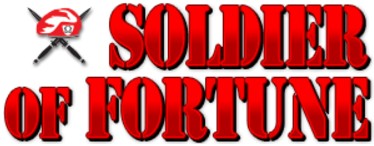“Cowering under a desk,” she replied, “is indeed the only recourse for people facing life threatening situations in a school. Unless you are suggesting we pack every lunch box with a handgun.” [More]My latest "Rights Watch" column for GUNS Magazine is now online.
Friday, March 16, 2012
Is “Cowering...Only Recourse” To School Shooting?
Subscribe to:
Post Comments (Atom)























3 comments:
You know what they say; “No question is too stupid”. Answers, though, like the one “exposed” below . . . . For those of us old enough to remember, MAD (Mutual Assured Destruction) certainly worked for how many years ? At least, I never had to survive inside a bomb shelter while waiting to get killed. Although there were a few times schoolteachers told us to duck & cover. So I guess the educational establishment hasn’t learned anything yet.
Coward...one who cowers.
cower
v cower [ˈkauə]
to draw back and crouch in fear
Cowardice
See also behavior; fear
invertebracy
the state or quality of being without a backbone, hence, metaphorically, spinelessness; lack of strength of character.
poltroonery
cowardice; cowardly behavior. — poltroon, n. — poltroonish, adj.
pusillanimity
a cowardly, irresolute, or fainthearted condition. — pusillanimous, adj.
recreancy
cowardice, treason, or disloyalty. — recreant, n., adj.
cow·ard/ˈkouərd/
Noun:
A person who lacks the courage to do or endure dangerous or unpleasant things.
A milksop, Milquetoast, pantywaist, sissy, pansy - a timid man or boy considered childish or unassertive
cow·ard (kourd)
n.
One who shows ignoble fear in the face of danger or pain.
[Middle English, from Old French couard, from coue, tail, from Latin cauda.]
coward adj.
Word History: A coward is one who "turns tail." The word comes from Old French couart, coart, "coward," and is related to Italian codardo, "coward." Couart is formed from coe, a northern French dialectal variant of cue, "tail" (from Latin cda), to which the derogatory suffix -ard was added. This suffix appears in bastard, laggard, and sluggard, to name a few. A coward may also be one with his tail between his legs. In heraldry a lion couard, "cowardly lion," was depicted with his tail between his legs. So a coward may be one with his tail hidden between his legs or one who turns tail and runs like a rabbit, with his tail showing.
"Live free or die: Death is not the worst of evils."
General John Stark (1728 - 1822), New Hampshire Militia leader, in a toast in a 1809 letter to Battle of Bennington reunion participants composed of veterans of the Massachusetts Militia and the New Hampshire Milita that he had led in that battle which preceded the decisive victory at Saratoga. As a young man, Stark had been captured by Abenaki Indians and forced to run a gauntlet of warriors wielding sticks to beat him. Instead, Stark seized the stick from the first warrior in the gauntlet and proceeded to beat the warrior. Based on this demonstration of bravery, Stark was inducted into the tribe. Second in command in Roger's Rangers during the French and Indian War, Stark refused to participate in an attack on the Abenaki village where his Abenaki foster parents lived. Stark also led the New Hampshire Militia at the Battle of Bunker Hill.
"It is better to die on your feet than live on your knees."
- Emiliano Zapata (1877 - 1919), Mexican reformer & revolutionary
Others believe that you do whatever it takes to stay alive. Whatever.
You get to choose which is the best path to follow. Choose wisely.
Post a Comment